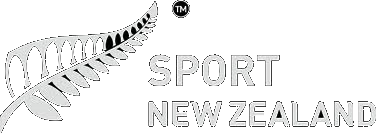Expansion period: The fifties
Don Green (Life Member) won the National Championship Title in 1956. He was an irrepressible figure in the sport and was President of the Association in 1972 and 1973 and represented New Zealand on the International Federation for a number of years. He reflected on the fifties in the Jubilee publication.
Important sport
The fifties heralded the beginnings of Squash Rackets as an important sport in New Zealand. The number of clubs almost doubled but more significantly open clubs appeared in Christchurch, Hawkes Bay, Invercargill, Auckland and Henderson. The game was becoming available nationwide and on a non-restricted basis, catering for men and women. The platform for the dramatic growth in the sixties was being put in place. It must be said that "open" in this context was not always what it seemed. For example Timaru known as an open club excluded women members for many years.
In the early fifties the main functions of the Association were to maintain liaison between clubs and to run the New Zealand Championship Tournament which incorporated the final of the Cousins Shield for the mens interclub teams event, the winners of the South Island sections being previously determined. In 1951 the tournament included the Womens Individual Championship (the first) and in 1958 the Womens Club Teams final (Mitchell Cup). 1950 saw the Junior Championship for Men (Lewis Cup) and a Junior Womens Championship (Childs Vase) was begun in 1956.
At first the Squash New Zealand secretariat moved to the club holding the NZ Championships. Thus P.W. Young (Timaru 1950), R.O. Haddon (Palmerston North 1951) and P F Black (Oamaru 1952) held the secretariat position. However as the game grew so did the administrative requirements and in 1953 R.O. Haddon became secretary with a management committee in Palmerston North. It is invidious to select individuals when obviously so many have contributed, but Roy Haddon, ("Mr Squash") merits special mention. Roy had a vision of the future of squash and his personality, entrepreneurial skills, initiative and enthusiasm, although ruffling a few feathers at times, were not to be denied and the game in New Zealand will always be indebted to him. He provided the catalytic force required and took enormous delight from the development of the game.
Long serving
A.D. Long, E.H. Christmas and A.M. Johns were long-serving members of that Management Committee and their efforts and those of many others working quietly behind the scenes kept the Association moving forward.
Mention should also be made of Mr Roy Mitchell who was President right through the fifties and whose interest and generosity befitted squash throughout his lifetime and later through the Mitchell Trust. He also donated the Mitchell Rose Bowl (Womens Championship) and Mitchell Cup (Womens teams) which now help keep his memory alive.
Player power shift
The fifties proved to be the decade marking the end (at least for some time) of players from the South tending to dominate the North. The Cousins Shield was for example won by South Island Clubs seven times in this period. Coaching was certainly not available on an organised way in those days, but in most clubs there was always someone willing to help or advise. Many players from the Timaru Club who went on to National honours were fortunate to be introduced to the game by Mr R G "Wozzie" Wilson, a master at Timaru Boys High School, who was an astute coach and tactician. Squash was fortunate also because leading players in all clubs actively helped and encouraged younger players ensuring the game would prosper.
Many players brightened the squash scene over these years and helped to raise the standard of play. Mentioning some by name is not to overlook the contribution that others have made.
Mr John Gillies came to New Zealand from England to reside in Invercargill, and won the NZ title in 1950, 51 and 52. John had been runner-up in the British Amateur Championship before the Second World War and brought a new dimension to the game here with his variety of shots, wrist work and deception and not the least by setting a standard to be challenged.
Hashim the great
Perhaps the greatest individual contribution by a player came through the visit of Hashim Khan in 1952. Possibly the greatest player of all time, this "World Champion" toured New Zealand in a demanding schedule which no-one would accept today. Hashim appeared constantly on court throughout the country and was prepared to play anyone for a few minutes - a little longer if there was some talent. People literally queued for hours for the opportunity to "have a hit" with Hashim. He attracted hundreds of people who knew nothing about the game to come and watch. His patience was amazing and his stamina unreal. At one stage on his South Island tour his playing hand was badly blistered but he insisted on continuing his programme. It is certain no world ranked (or locally ranked) player of today would take part in such a gruelling tour or carry it out with such enthusiasm and cheerfulness leaving behind such a feeling of goodwill. It was a tremendously successful public relations exercise. Hashim returned in 1957 this time with Roshan Khan and played a very successful series of exhibition matches.
In 1954, Miss Janet Morgan and Miss Sheila Speight, both from Great Britain toured New Zealand playing both men and women and giving exhibitions. Again these players showed an expertise not matched here before and opened new horizons for our own exponents.
International challenges
The fifties also saw the start of international squash for New Zealand. In 1953 a team of promising players, Peter Vesty, Les Milne, Murray Gunn and Don Mochan toured Australia. Vesty and Mochan were both later to win the NZ Championship, Mochan three times. Also in 1953 an Australian Womens Team, led by Mrs R Maddern, was the first overseas team to visit New Zealand and an international match was played in Palmerston North.
The NZ team was Mesdames N. New (PN), M. Kennedy (Oamaru), P. Hunter and D. Gilbert-Smith (Ham). Mrs Maddern won the NZ Womens Championship defeating Mrs New in 1951, 52, 54 and 55. 1954 saw Mrs New, Mrs Kennedy and Mrs Gilbert-Smith travel to Australia. In 1958, Bryan Stuart and Vic Toohey came to New Zealand with the first visit from an Australian Men's Team. Allen Johns, Graeme Bird, Don Green and Bryden Clarke toured Australia and played in the interstate series.
Unfortunately Bryden Clarke was injured early on and was replaced by Norman Coe. This team also played against a British team of R. Wilson, M. Oddy, N. Broomfield, D. Hughes and J. Lyons which was in Australia at the same time. Later this British team toured New Zealand and Michael Oddy beat Nigel Broomfield in the final of the NZ Championships. Looking back it is interesting that the NZ players were pleased that members of the visiting teams played in the NZ Championships. The "open" nature of the events was not questioned.
Although the NZ teams lost all the team matches in this period the experience gained was invaluable and the lesson was soon learnt that overseas players were not unbeatable. Thus goals were again raised to improve performance. As part of the selection for the 1959 team a round robin tournament was held in Christchurch between players from the North and South Islands and out of this evolved the North-South match in subsequent years. One comment must be passed. Bryden Clarke had his eyes set on selection for this team and had trained so hard (and successfully) that when he arrived in Christchurch in his transformed 'sylphlike' form a South Island player believed the North had fielded a substitute.
Maturity
In essence the fifties saw squash in NZ mature. It also saw the beginning of the explosive development of courts and clubs open to men and women. The game owes much to a few dedicated, farsighted people who saw squash expand on club lines and many countries envied the basic structure. 1953 also saw the introduction of the first Association levy on players and started squash on the right lines - to stand essentially on its own.
<< Back










